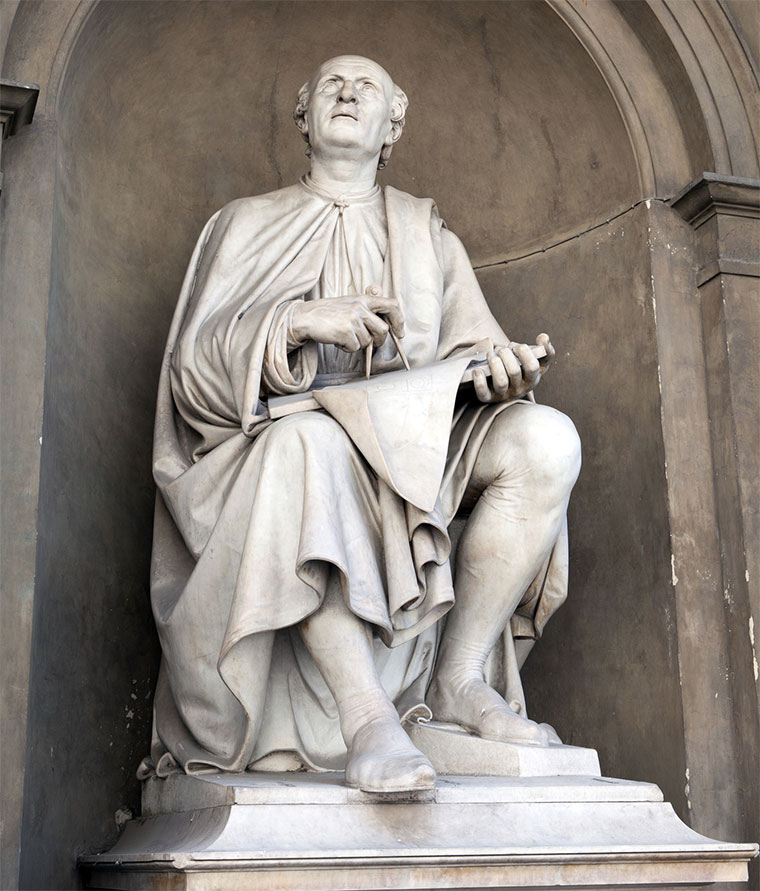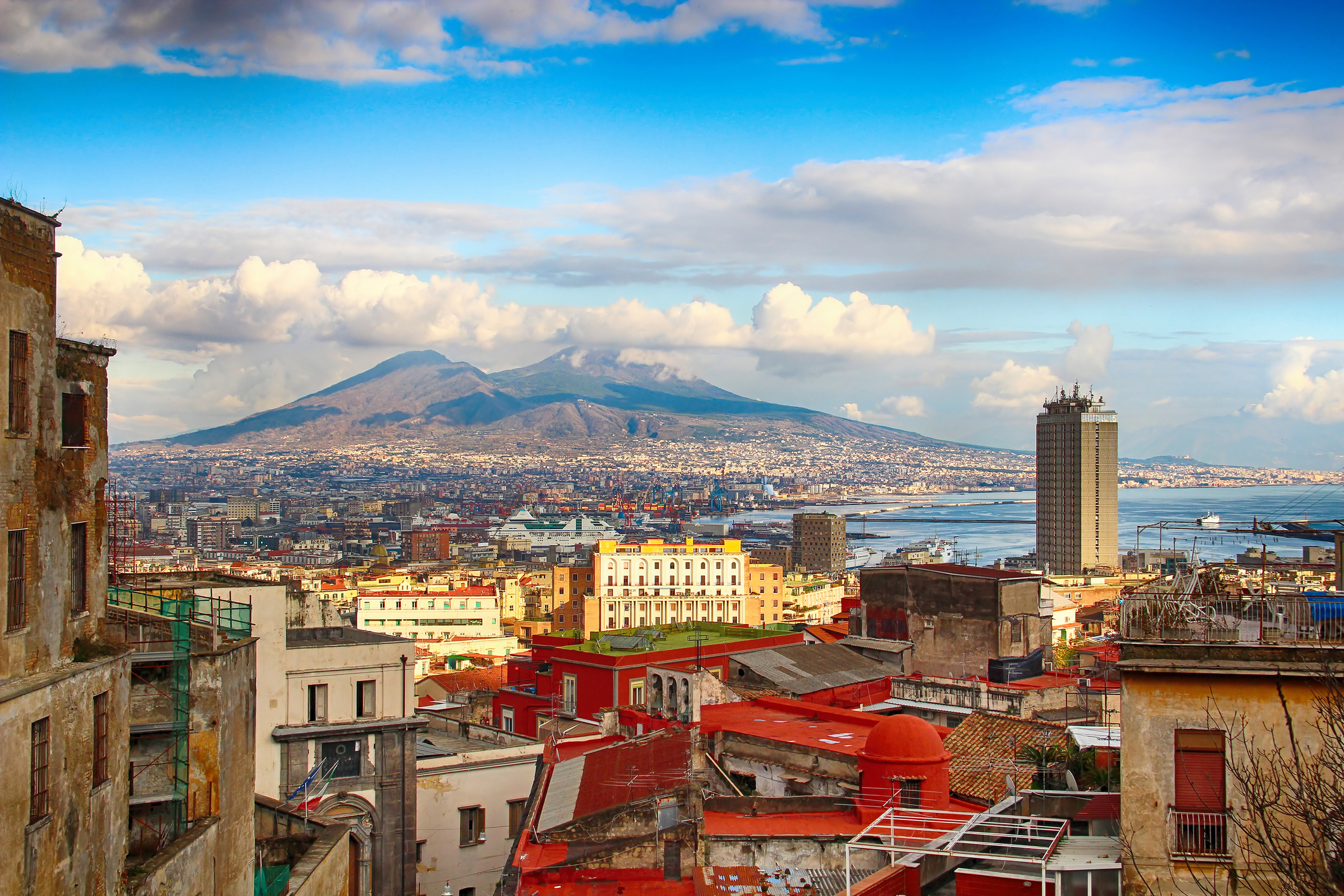Florence’s cathedral—Santa Maria del Fiori, or simply il Duomo, as it is known to the Florentines, is a fantastic piece of architecture. Every time I visit Florence its beauty strikes me. The cathedral was built in the Gothic style, and the facade of the building displays multi-colored marble panels of green, rose and white. In front of the Duomo stands the octagonal Baptistery, one of the oldest buildings in the city, where Dante himself was baptized! The baptistry also features the bronze door designed by Ghiberti. Once Michelangelo, in complete admiration of the panels constructed in bronze called them the “Gates of Paradise”. He considered them so lovely that he said they could easily have graced the doors to heaven.
Florence’s Duomo was started in 1296 by Arnolfo di Cambio. However, it remained incomplete for more than two hundred years. With the demise of poor Arnolfo and the onset of the Black Death, work ground to a halt. Giotto stepped in and helped to finish off the basilica and the bell tower. But no one, not even Giotto or the architectural luminary Andrea Pisano, had a viable solution to top it off.

The Florentines scratched their heads and furrowed their brows. To Medieval men, it seemed an impossible feat to create a dome that would span the space above the church without the use of flying buttresses. The Florentines turned up their noses at such ugly reinforcements, deeming them secondhand solutions. Instead, they wanted a free-standing dome, with pleasing lines and classical proportions. So instead of a “quick fix,” Florence held out for a better plan. Meanwhile, the cathedral remained uncapped, and rainwater poured in from the skies.
It was Filippo Brunelleschi, the hot-tempered Florentine goldsmith, who came up a plan to build a sustainable dome. Standing before the Pantheon in Rome, he had an “Aha!” moment. While gazing at the coffered ceiling constructed by the Romans, he found the structural formula he needed. Dusting off an ancient concept, he improved upon the idea. Instead of a single, circular shell of concrete, he created double-nesting, egg-shaped domes. To finish it off, he used lightweight Florentine bricks. It was the perfect solution to reduce stress and ensure the dome would stand the test of time.
If you are truly adventurous, you can climb to the top of Brunelleschi’s cupola. But, there is no elevator to go to the top. Instead, the only means to reach the pinnacle is to climb four hundred and seventy-three steps that spiral upwards, through the two concrete shells of the dome. Around and around you go passing by Vasari’s fresco of “The Last Judgement” that displays sinners being roasted alive and whipped by the devil’s minions, while the devoted are welcomed into paradise.

When you arrive at the top of the cathedral, you are treated to an incredible view of the city. Una vista mozzafiato—breathtaking! Below you will see the Arno that flows on the western side of the city and in the distance toward the north, you will see Fiesole. Spend as much time as you like at the top, but when you descend back down to the ground don’t forget to take a peek into the church’s crypt. There you will find Brunelleschi’s final resting place. He sleeps there in the Duomo for all of eternity looking up into the dome he built brick by brick. That was quite an honor as before Brunelleschi’s time, few saints, and fewer common men were allowed to be interned in the Duomo’s crypt. But, Brunelleschi’s impressive dome succeeded in capturing the imagination and respect of the Florentine people, and it was the least they could do to honor his artistic genius.
Melissa Muldoon writes the dual language blog StudentessaMatta.com in Italian and English. She also produces Matta Youtube videos in Italian and Podcasts and co-leads Italian Language Immersion programs in Lucca and Arezzo as well as organizes Homestays with Italian teachers improve language skills and learn more about Italian customs and culture.































